12 JYOTIRLINGA
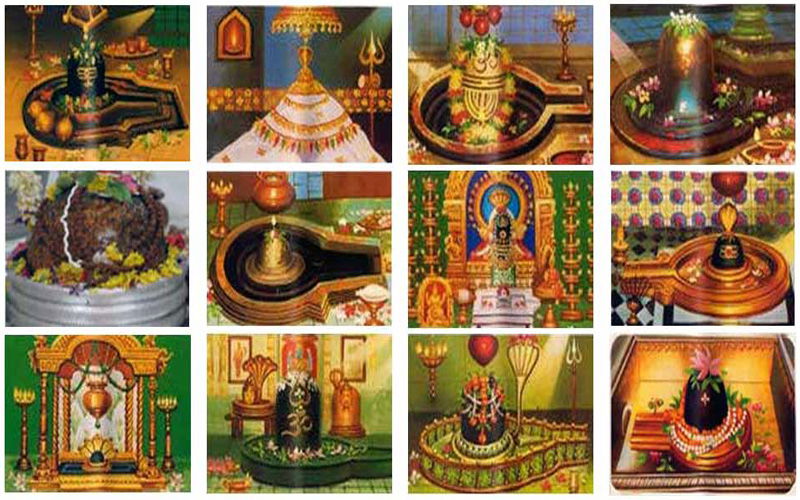
As we all know, the month of Savan is the season of Lord Shiva, hence on this auspicious occasion, let us revisit these sacred Shiva sites which are called Jyotirlinga. The Jyotirlingas are sacred shrines dedicated to Lord Shiva, one of Hinduism's main deities. According to Hindu mythology, there are twelve significant Jyotirlingas dispersed throughout India. Each Jyotirlinga has tremendous religious significance and is thought to be a manifestation of Lord Shiva in his "Lingam" form, which depicts his cosmic and infinite nature. These shrines are thought to confer immense blessings and spiritual merit on devotees who visit and worship there. We shall go into the mythological roots, historical context, geographical locations, and astrological significance of each of the twelve Jyotirlingas in astrology.
Hindus hold Jyotirlingas in the highest regard, and visiting them is regarded as a deeply spiritual and auspicious act. It is thought that visiting these Jyotirlingas to pray and perform rituals can bestow spiritual blessings and atone for a sin.
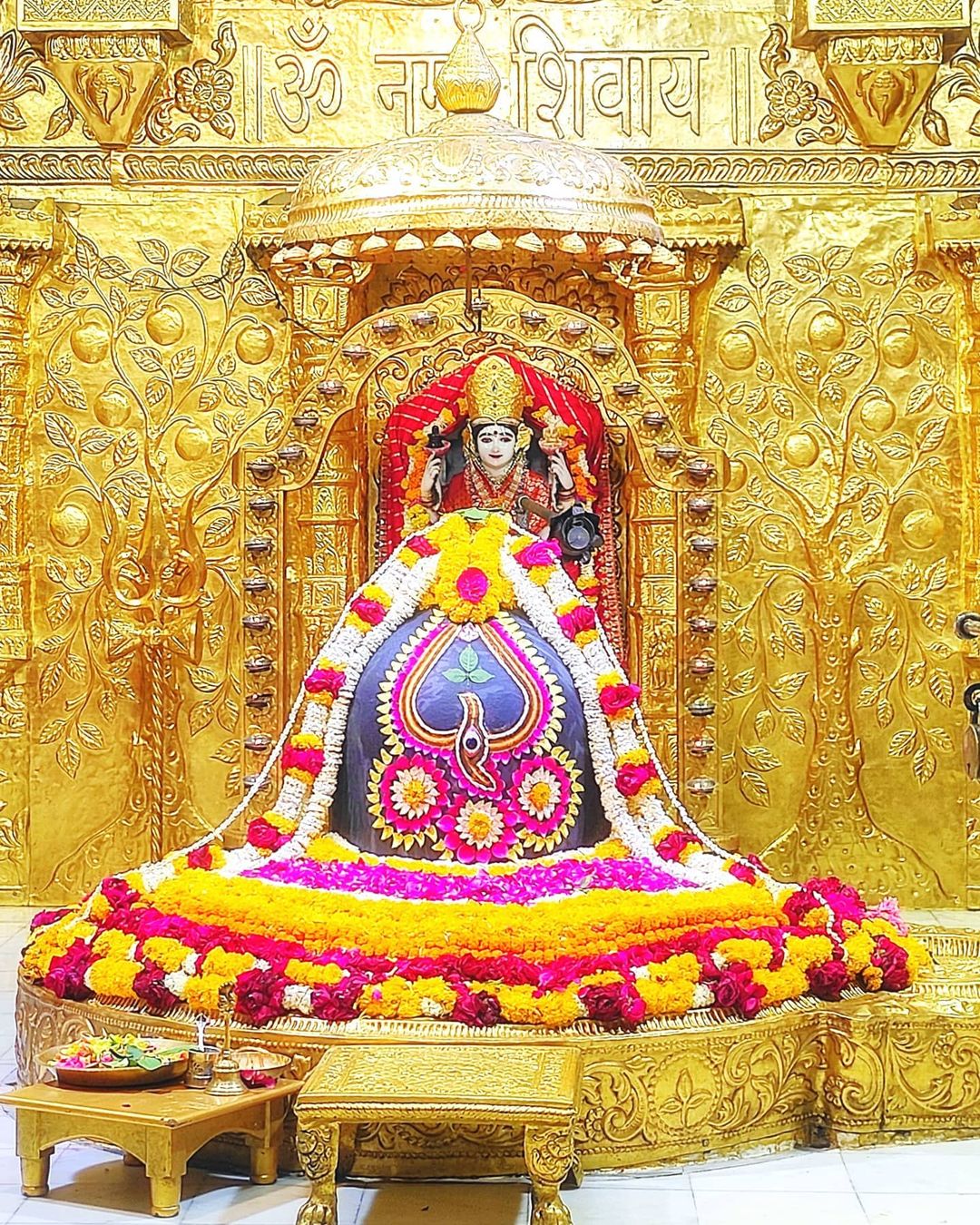
Somnath Jyotirlinga: The Somnath Jyotirlinga is thought to be the first of the twelve Jyotirlingas and is situated in Prabhas Patan, close to Veraval in Saurashtra, Gujarat. The shrine has a long history and is connected to the planet Moon in astrology because the name "Somnath" means "The Protector of the Moon."
- Ancient Temple: One of India's most revered and historic Shiva temples is Somnath. Due to numerous invasions and other forms of destruction over the centuries, it has a history that spans several millennia.
- Invaders and Restorations: Over the centuries, numerous invaders have repeatedly attacked and destroyed the temple of Somnath. It was rebuilt numerous times by various kings, including Gujarat's King Bhimdev and the renowned Raja Raja Chola of the Chola dynasty. Designed in 1951, the current temple is a stunning illustration of contemporary temple design. It displays influences from other historical eras as well as the Chalukya and Chaulukya styles.
- Somnath Trust: The Shree Somnath Trust, which oversees the temple's ongoing development, is now in charge of managing and maintaining it.
- Rituals and Aarti: A large number of devotees attend the daily rituals and aarti (a religious ceremony involving lamps) that are held at the temple. The main aarti, referred to as "Shringar Darshan," is especially important and draws devotees from all over.
- Somnath Mahadev Fair: Every year, during the Kartik Purnima festival, the temple hosts the Somnath Mahadev Fair, which draws a sizable crowd of devotees and pilgrims.
- Symbol of Resilience: Because of its long history and ability to withstand numerous hardships and reconstructions, the temple of Somnath is regarded as a representation of Hinduism's resilience and unbreakable spirit.
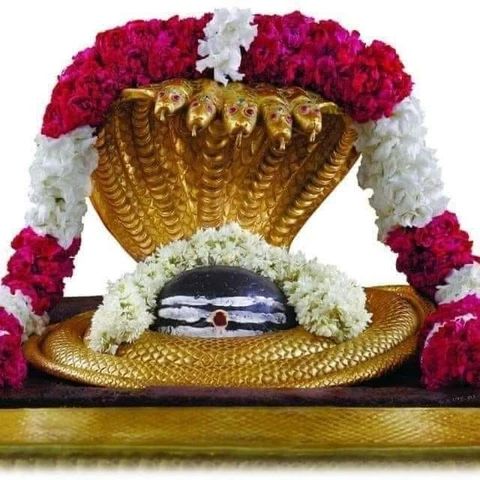
Mallikarjuna Jyotirlinga: The Mallikarjuna Jyotirlinga, also referred to as Kailash of the South, is located on the Srisailam Hill in the state of Andhra Pradesh. The Jyotirlinga is associated with the planet Mars in astrology, and the temple is devoted to Lord Shiva and his consort, Goddess Parvati.
- The Mallikarjuna Jyotirlinga is thought to represent the place where Lord Shiva (Mallikarjuna) and Goddess Parvati (Bhramaramba) met. A Shakti Peetha, a place where pieces of the goddess Sati's body fell after her self-immolation, is also revered for this temple.
- Historical significance: The temple has a long history, and various ancient Hindu scriptures and epics like the Puranas make reference to it.Dravidian and Nagara architectural styles are uniquely combined in the Mallikarjuna temple. It has impressive gateways, lovely sculptures, and intricate carving
- Festival celebrations: The Maha Shivaratri festival, which is observed here with great enthusiasm, brings a significant influx of devotees to the temple. Another notable celebration that occurs every year is the Bhramotsavam (chariot festival).
- The Srisailam region is known for its scenic beauty as it is surrounded by lush vegetation and unspoiled natural landscapes. A nearby sacred stream called the Patala Ganga contributes to the area's spiritual atmosphere.
- Accessibility: There are frequent bus services from a number of cities in Andhra Pradesh and neighbouring states to the Mallikarjuna Jyotirlinga, which is easily reachable by road.
- The Mallikarjuna Jyotirlinga is one of South India's most popular and revered temples, attracting devotees from all over the world.
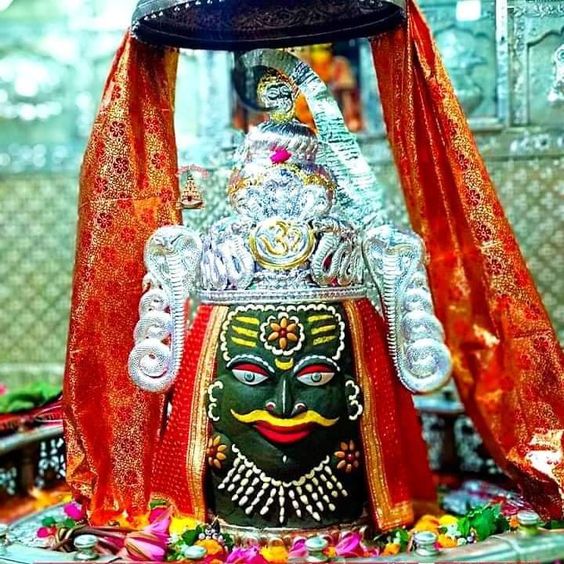
Mahakaleshwara Jyotirlinga: One of the most well-known and revered Jyotirlingas is the Mahakaleshwar Jyotirlinga, which is situated in Ujjain, Madhya Pradesh. Mahakaleshwar is an astrological symbol for Saturn, and the temple is well known for its special "Bhasma Aarti," in which holy ash is used in worship.
- Importance: Hindus hold the Mahakaleshwara Jyotirlinga in high regard because it is the only Jyotirlinga that faces south rather than east. It represents Lord Shiva's ferocious Mahakala aspect, which stands for the cycle of creation, preservation, and destruction.
- Ancient Structure: The Mahakaleshwara temple is a historically significant building. Over the centuries, it has undergone numerous additions and renovations that reflect various architectural styles.
- Lingam and Idol: A Shiva lingam, a representation of Lord Shiva, serves as the Mahakaleshwara Jyotirlinga's primary deity. Devotees typically cover the lingam in a silver mask and decorate it with flowers and offerings. There is also a sizable Shiva idol in the sanctum.
- Daily Rituals: The temple practises intricate daily rituals and worship rites, such as the Bhasma Aarti, in which holy ash is applied to the lingam as an act of worship.
- Bhasma Aarti: Every morning at 4:00 AM, a grand ceremony known as the Bhasma Aarti is performed. It is one of the temple's distinctive and important features. The lingam is decorated with various priceless materials and bathed in ash (bhasma) during this ritual.
- Festivals: The temple experiences a huge influx of visitors during special occasions like Maha Shivaratri and Sawan month (the Hindu calendar month devoted to Lord Shiva).
- Ujjain is an ancient city in India with significant historical and mythological significance, and it is where the temple is located. It is also well-known for its connection to the Kumbh Mela, a significant religious gathering that occurs every twelve years.
- Abhishekam: In the temple, it's customary to give the lingam a ceremonial bath using milk, water, ghee, honey, and other holy ingredients.
- Omkareshwar and Kashi Vishwanath: Omkareshwar Jyotirlinga in Madhya Pradesh and Kashi Vishwanath Jyotirlinga in Varanasi, Uttar Pradesh, are thought to be closely related to Mahakaleshwara Jyotirlinga. The three together make up an important pilgrimage route called the "Maha Jyotirlinga Yatra."

Omkareshwar Jyotirlinga: The Omkareshwar Jyotirlinga is a representation of Lord Shiva's Omkar form and is located on an island in the Narmada River in Madhya Pradesh. It is a significant destination for pilgrims and is connected to the astrological planet Mercury.
- Mythological significance: According to Hindu mythology, the holy river Narmada was split into two at the request of the Devas (celestial beings) to form an island, and the land in the center became the shape of the Om symbol. Hence, it became the abode of Lord Shiva, known as Omkareshwar.
- Lingam form: The presiding deity at Omkareshwar Jyotirlinga is Lord Omkareshwar, represented in the form of a Swayambhu (self-manifested) lingam. The lingam is usually covered with a silver mask and adorned with flower garlands and sandal paste by the devotees.
- Two temples: There are two main temples at Omkareshwar Jyotirlinga - one is the Omkareshwar temple, which is located on the mainland, and the other is the Amareshwar temple, situated on the island. Both temples are important pilgrimage sites and attract thousands of devotees every year.

Kedarnath Jyotirlinga:The Kedarnath Jyotirlinga is known for its picturesque beauty and spiritual significance. It is situated in the Uttarakhand region of the Garhwal Himalayas. Kedarnath is associated with Venus in astrology.
- Ancient History: Kedarnath is an ancient temple with historical and mythological significance. It is believed to have been built by Adi Shankaracharya, the 8th-century philosopher and theologian, who revived and reestablished many Hindu sacred sites.
- Accessible by Trekking: The temple is not directly accessible by road. Devotees have to undertake a challenging trek of about 14 kilometres from Gaurikund to reach Kedarnath. The trek passes through picturesque landscapes, making the journey spiritually enriching.
- Holy Confluence: Kedarnath is situated near the confluence of two holy rivers, Mandakini and Saraswati. It is said that bathing in these rivers before visiting the temple is considered purifying.
- Lingam Representation: The presiding deity in the Kedarnath temple is a naturally formed irregular-shaped rock called the Kedareshwar Lingam. Unlike the smooth and sculpted lingams in other temples, Kedarnath's lingam is unique in its appearance.
- Seasonal Temple: Due to the extreme weather conditions in the region, the Kedarnath temple is open to devotees only for six months in a year. It usually opens its doors in late April or early May and closes after Diwali in October or November. During the winter months, the temple remains closed as the region gets heavily snowbound.
- Part of Char Dham Yatra: Kedarnath is one of the four major destinations in the Char Dham Yatra, an important pilgrimage circuit in the Indian Himalayas. The other three sites include Badrinath, Gangotri, and Yamunotri.
- Pilgrimage Significance: Kedarnath Jyotirlinga is considered highly sacred by devotees of Lord Shiva. It is believed that visiting the temple and seeking blessings of Lord Kedareshwar can cleanse one's soul and lead to salvation (moksha).
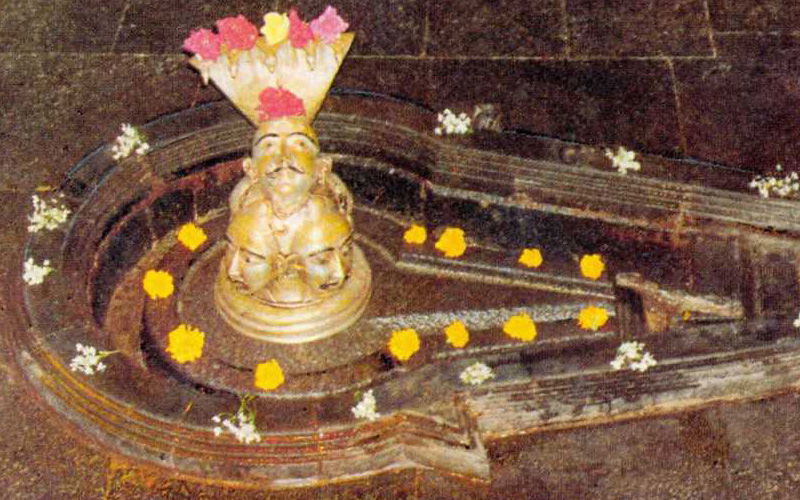
Bhimashankar Jyotirlinga: The Maharashtra district of Pune is home to the Bhimashankar Jyotirlinga. It has a significant place in the hearts of Lord Shiva's devotees and is connected to the planet Sun in astrology.
- Hindu mythology connects the legend of Bhimashankar Jyotirlinga with the tale of Lord Shiva taking the form of Bhima to defeat Tripurasura. On the spot where Lord Shiva appeared in his Bhima form and vanquished the demon, the temple is thought to have been constructed.
- Location: The Bhimashankar Temple is situated in the Maharashtrian village of Bhorgiri, which is part of the Pune district. It offers breathtaking views of the surroundings and is tucked away in the Sahyadri hills' lush vegetation.
- Architecture: The temple was built in a style that blends traditional and modern elements. The Shiva Linga is housed in the temple's main sanctum, which also features intricately carved pillars and sculptures.
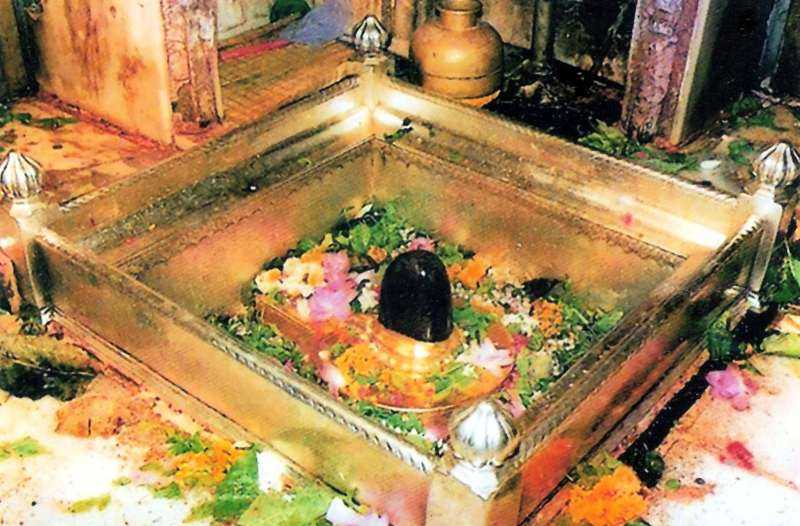
Kashi Vishwanath Jyotirlinga: One of the holiest and most revered temples devoted to Lord Shiva is the Kashi Vishwanath Jyotirlinga, which is situated in Varanasi, Uttar Pradesh. Kashi Vishwanath is associated with the planet Rahu in astrology.
- Historical Significance: The original temple is believed to have been built several thousand years ago. However, the current structure dates back to the 18th century, as it was reconstructed by the Maratha queen Ahilyabai Holkar of Indore in 1780 after the original temple was destroyed by Mughal Emperor Aurangzeb.
- Sanctum Sanctorum: The main deity of the temple is a Shiva linga, which represents Lord Shiva. The linga is housed in the sanctum sanctorum, and it is one of the most sacred spots for Hindu pilgrims and devotees.
- Open to All: Unlike some temples in India that have restricted access based on caste or religion, Kashi Vishwanath is open to people of all castes and religions. It is considered a symbol of unity and inclusiveness.
- Ganga Aarti: The temple is renowned for its daily Ganga Aarti (a ritual of worship offered to the river Ganges) that takes place in the evening. The aarti is a grand spectacle with devotional songs, bells, incense, and oil lamps being lit and offered to the river.
- Varanasi's Spiritual Center: Varanasi itself is considered one of the oldest living cities in the world and is a major spiritual and cultural hub in India. The presence of the Kashi Vishwanath Jyotirlinga further adds to its spiritual significance.
- Renovations: Over the centuries, the temple has undergone various renovations and expansions by different rulers and devotees. Its architectural style reflects a blend of Hindu and Islamic architecture.

Trimbakeshwar Jyotirlinga: In Maharashtra's Nashik district, there is a Trimbakeshwar Jyotirlinga. It has great religious significance and is connected to the astrological planet Jupiter.
- Legend: The Trimbakeshwar Jyotirlinga is linked to a number of myths from Hinduism. One such legend links it to the Godavari River's beginning. It is thought that the Brahmagiri hills near Trimbak are where the Godavari River gets its start. In order to atone for the sin of killing the demon Ravana, Lord Rama, the seventh manifestation of Lord Vishnu, prayed to Lord Shiva here.
- Three-Faced Linga: The linga representing Lord Shiva at Trimbakeshwar Jyotirlinga has three faces, each of which stands for Lord Brahma, Lord Vishnu, and Lord Rudra (Shiva). It differs from other Jyotirlingas, which typically have single-faced lingas, thanks to this distinctive feature.
- Special Rituals: The copper receptacle known as the "Kushavarta," which is thought to be the Godavari River's source, is used by the temple priests at Trimbakeshwar to conduct rituals. The ritual that denotes the river's beginning is significant.
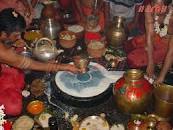
Vaidyanath Jyotirlinga: The heart of Sati, Lord Shiva's consort, is thought to have fallen on the Vaidyanath Jyotirlinga, which is situated in Deoghar, Jharkhand. It has a connection to the planet.
- Origin: Ravana, the demon king of Lanka, is a central figure in the legend surrounding Vaidyanath Jyotirlinga. It is said that Ravana worshipped Lord Shiva here in the past to become immortal.
- Hindu mythology states that the temple underwent multiple periods of destruction and reconstruction. The Maratha queen Ahilyabai Holkar rebuilt the current temple in the 18th century.
- Architecture: The Vaidyanath Jyotirlinga temple was constructed in the manner of a traditional Hindu temple. There are numerous smaller shrines devoted to other gods throughout the large temple complex.
- Local Beliefs: Lord Shiva is known as "Vaidyanath," which translates to "the Lord of Physicians," and the temple is connected to the notion that he has the capacity to cure illnesses and diseases.Traditional Hindu rituals are observed at the temple, and priests regularly conduct pujas and give the lingam a ritualistic bath to worship Lord Shiva.
- Location: The Deoghar district of Jharkhand, India, is home to the serene and picturesque Vaidyanath Jyotirlinga. The location of the temple contributes to the area's spiritual atmosphere.
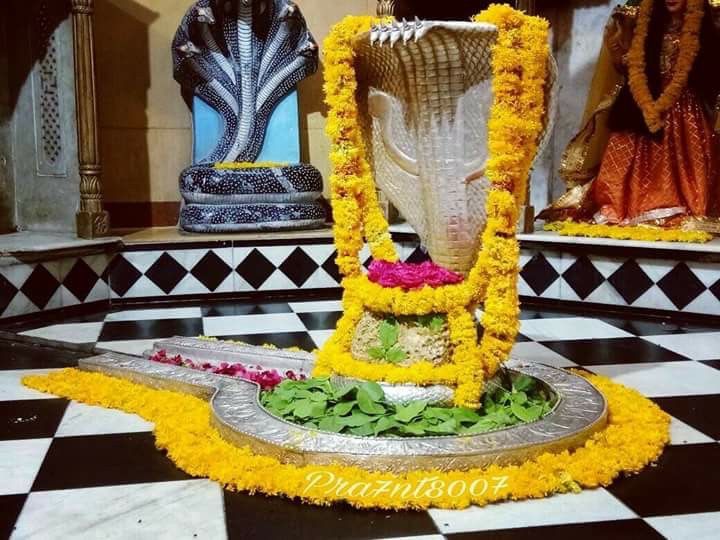
Nageshwar Jyotirlinga: The Nageshwar Jyotirlinga, which is located in Dwarka, Gujarat, is thought to be the residence of Lord Shiva in his capacity as the Lord of Nagas (snakes). Nageshwar is associated with Pluto in astrology.
- Old Temple: The Nageshwar temple is a historically significant old building. Over 5,000 years ago, Lord Samba, son of Lord Krishna, is thought to have constructed it for the first time.Lord Nageshwar, also known as Lord Shiva, is the temple's presiding deity and is worshipped here in the form of a Linga.
- Giant Shivalinga: The magnificent Shivalinga, also referred to as the "Ardhanareeshwar" form of Lord Shiva, is the centre of attention at the Nageshwar Jyotirlinga temple. It is a special illustration of Shiva and Parvati appearing as one.
- Legend of Demon Daruka: In Hindu mythology, a demon by the name of Daruka once kidnapped Supriya, a devotee of Shiva. Supriya prayed to Lord Shiva and cried out to him as "Nageshwar," pleading for help. This is where Lord Shiva appeared and vanquished the demon, earning him the name "Nageshwar" or "Lord of the Serpent."
- Jyotirlinga significance: According to legend, Jyotirlingas are self-manifested lingas that radiate a divine light and represent Shiva. As the eighth of the twelve Jyotirlingas, Nageshwar Jyotirlinga is highly revered.
- Nageshwar Jyotirlinga is an important pilgrimage site for Shaivite Hindus, and during special festivals and auspicious occasions, it draws thousands of devotees from all over the country and abroad.
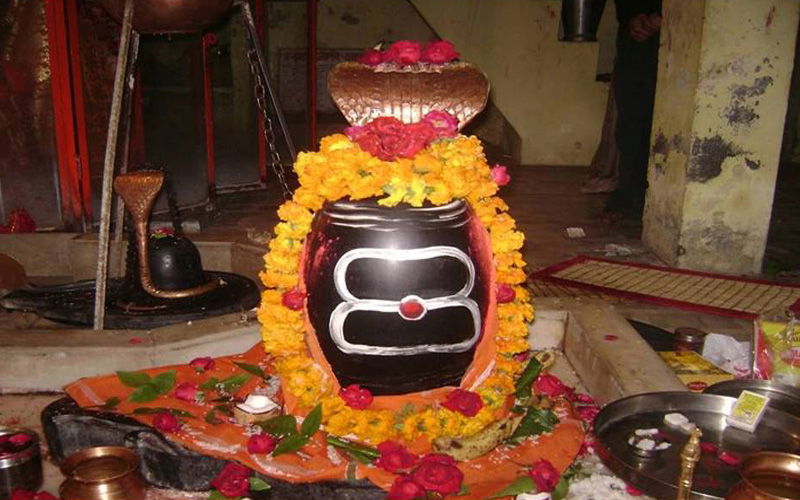
Rameshwar Jyotirlinga: In astrology, the Rameshwar Jyotirlinga, which is situated on Rameswaram Island in Tamil Nadu, is linked to the planet Neptune. The temple is a vital Hindu pilgrimage site and has great religious significance.
- Identity: This temple, which is devoted to Lord Shiva, is also known by the name Ramanathaswamy Temple. The name "Rameshwar" means "Lord of Rama," which denotes its connection to the Hindu epic Ramayana.
- Status: Rameshwar is one of the twelve revered Jyotirlingas, which are thought to be the most cherished Shiva shrines in India.Hindus make a significant pilgrimage to the temple, which is one of India's Char Dham pilgrimages.The Ramanathaswamy Temple is renowned for its grand architecture and the magnificent corridors with intricately carved pillars.
- The presence of "floating stones" used in the temple's construction is one of its most intriguing features. According to myth, Lord Rama and his Vanara (monkey) army used these stones to construct the bridge connecting Rameswaram and Lanka in order to save his wife Sita from the demonic king Ravana.
- The temple is renowned for its lengthy corridors, which cover a sizable area. One of the world's longest temple corridors, the "Ramanathaswamy Corridor" is referred to as the longest corridor and is approximately 1,220 metres long.
- Holy Tanks: Before entering the main shrine, pilgrims are advised to take a bath in one of the temple complex's numerous sacred water tanks (teerthams).
- Festivals: The temple enthusiastically observes a number of festivals, including Thai Amavasya, Brahmotsavam, and Maha Shivaratri.

Grishneshwar Jyotirlinga: The Grishneshwar Jyotirlinga is the last of the twelve Jyotirlingas and is located close to Ellora in Maharashtra. It is a sacred location for followers of Lord Shiva and is connected to the astrological planet Uranus.
- Historical Significance: Grishneshwar Jyotirlinga is regarded as one of the holiest pilgrimage sites for followers of Lord Shiva and has great religious significance. Ancient Hindu texts like the Shiv Purana and the Skanda Purana all make mention of it.
- Legend: The temple is connected to a myth involving a devout woman named Kusuma, according to Hindu mythology. According to legend, she erected a temple in praise of Lord Shiva and regularly paid homage to a Shivalinga. The lingam was destroyed by her vindictive, envious mother-in-law in a fit of rage. However, in response to Kusuma's devotion, Lord Shiva manifested himself as a Jyotirlinga before her, earning him the title of Grishneshwar, or the "Lord of Compassion."
- Sites Nearby: Grishneshwar Jyotirlinga's proximity to Ellora Caves, a UNESCO World Heritage site, increases its cultural and historical significance. Ancient Hindu, Jain, and Buddhist cave temples and monasteries can be found in Ellora Caves, which is a remarkable collection of them all.



